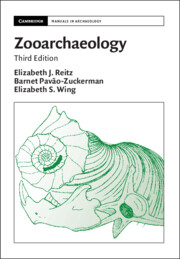Refine listing
Actions for selected content:
1295956 results in Books

Hume's Dialogues Concerning Natural Religion
- A Critical Guide
- Coming soon
-
- Expected online publication date:
- December 2025
- Print publication:
- 31 December 2025
-
- Book
- Export citation
Preface
-
- Book:
- After Anzac
- Published online:
- 05 December 2025
- Print publication:
- 17 December 2025, pp xv-xvi
-
- Chapter
- Export citation
Chapter 2 - Infantry recruit training in the AIF
-
- Book:
- After Anzac
- Published online:
- 05 December 2025
- Print publication:
- 17 December 2025, pp 38-70
-
- Chapter
- Export citation
Chapter 3 - British infantry tactical development, 1917
-
- Book:
- After Anzac
- Published online:
- 05 December 2025
- Print publication:
- 17 December 2025, pp 71-99
-
- Chapter
- Export citation
Chapter 4 - Reinforcement training and the schools in France
-
- Book:
- After Anzac
- Published online:
- 05 December 2025
- Print publication:
- 17 December 2025, pp 100-126
-
- Chapter
- Export citation
Chapter 7 - Leadership and training: officers
-
- Book:
- After Anzac
- Published online:
- 05 December 2025
- Print publication:
- 17 December 2025, pp 179-207
-
- Chapter
- Export citation
Conclusion
-
- Book:
- After Anzac
- Published online:
- 05 December 2025
- Print publication:
- 17 December 2025, pp 241-247
-
- Chapter
- Export citation

On the Global Water Crisis
- A Taxonomy of Human–Water Challenges
- Coming soon
-
- Expected online publication date:
- December 2025
- Print publication:
- 31 January 2026
-
- Element
- Export citation

Plays 1676–1678
- Coming soon
-
- Expected online publication date:
- December 2025
- Print publication:
- 31 December 2025
-
- Book
- Export citation
Chapter 5 - Weapons systems and specialist training
-
- Book:
- After Anzac
- Published online:
- 05 December 2025
- Print publication:
- 17 December 2025, pp 127-154
-
- Chapter
- Export citation

Zooarchaeology
- Coming soon
-
- Expected online publication date:
- December 2025
- Print publication:
- 18 December 2025
-
- Textbook
- Export citation
Notes
-
- Book:
- After Anzac
- Published online:
- 05 December 2025
- Print publication:
- 17 December 2025, pp 248-281
-
- Chapter
- Export citation
Contents
-
- Book:
- After Anzac
- Published online:
- 05 December 2025
- Print publication:
- 17 December 2025, pp vii-vii
-
- Chapter
- Export citation
Bibliography
-
- Book:
- After Anzac
- Published online:
- 05 December 2025
- Print publication:
- 17 December 2025, pp 282-293
-
- Chapter
- Export citation
Maps, figures and tables
-
- Book:
- After Anzac
- Published online:
- 05 December 2025
- Print publication:
- 17 December 2025, pp viii-xiv
-
- Chapter
- Export citation

Death and the Afterlife in Syriac Christianity
- Creating Social Identity and Emotional Communities
- Coming soon
-
- Expected online publication date:
- December 2025
- Print publication:
- 28 February 2026
-
- Book
- Export citation
Introduction
-
- Book:
- After Anzac
- Published online:
- 05 December 2025
- Print publication:
- 17 December 2025, pp 1-12
-
- Chapter
- Export citation
Acknowledgements
-
- Book:
- After Anzac
- Published online:
- 05 December 2025
- Print publication:
- 17 December 2025, pp xvii-xviii
-
- Chapter
- Export citation
Index
-
- Book:
- After Anzac
- Published online:
- 05 December 2025
- Print publication:
- 17 December 2025, pp 294-301
-
- Chapter
- Export citation
Frontmatter
-
- Book:
- After Anzac
- Published online:
- 05 December 2025
- Print publication:
- 17 December 2025, pp i-iv
-
- Chapter
- Export citation
